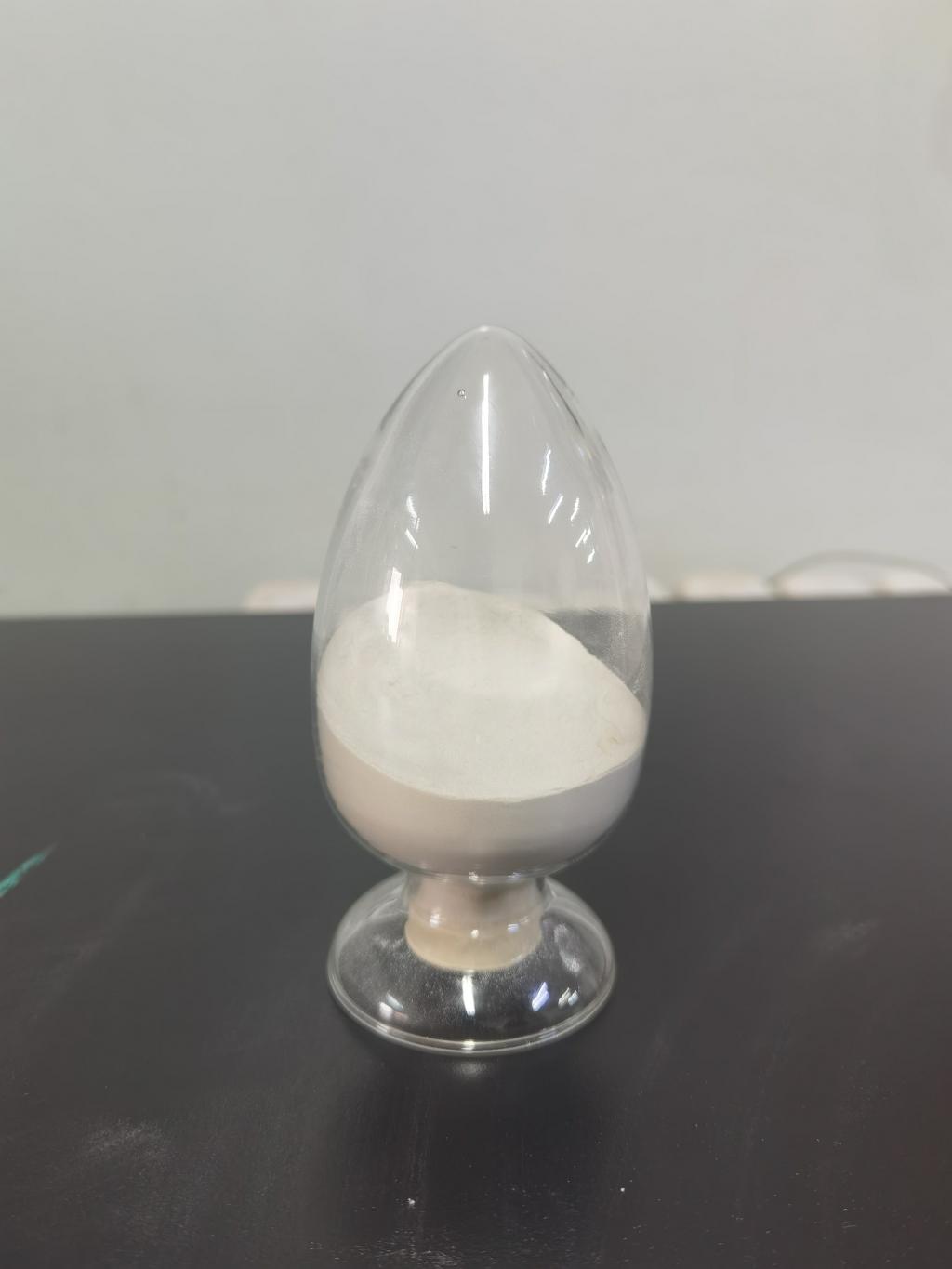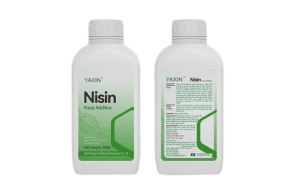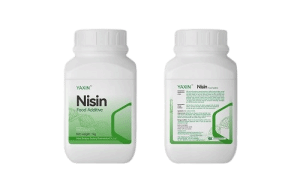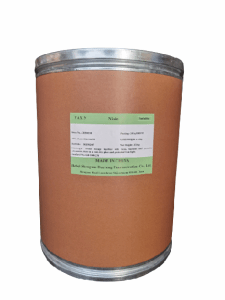Tel:+8618231198596

News
 CONTACT
CONTACT
 CONTACT
CONTACT
- Linkman:Linda Yao
- Tel: +8618231198596
- Email:linda.yao@dcpharma.cn
- Linkman:CHARLES.WANG
- Department:Overseas
- Tel: 0086 0311-85537378 0086 0311-85539701
News
The synergistic effects of nisin with other natural antimicrobials.
TIME:2024-10-29
Mechanisms of Synergy: How Nisin and Other Antimicrobials Work Together
Synergy between nisin and other natural antimicrobials generally works through complementary mechanisms. Nisin disrupts bacterial cell walls by binding to lipid II, a molecule essential for peptidoglycan synthesis, creating pores that cause cell death. When combined with other antimicrobials that either destabilize the outer membrane or inhibit other cellular functions, the overall antimicrobial effect is amplified.
For instance:
Essential Oils: Compounds in essential oils, such as carvacrol (found in oregano oil) and thymol (in thyme oil), disrupt bacterial cell membranes, making them more permeable. This facilitates nisin’s access to its target in Gram-positive and, in some cases, Gram-negative bacteria, which have an otherwise impermeable outer membrane. The combination often results in increased cell membrane permeability, enabling nisin to penetrate and act more effectively.
Organic Acids: Acids such as lactic and citric acid lower the pH of the environment, which enhances the stability and activity of nisin. Acidic conditions can also weaken bacterial cell walls, allowing nisin to bind more effectively and exert a greater antimicrobial effect.
Plant Extracts and Phenolic Compounds: Plant-based antimicrobials like garlic extract and green tea polyphenols contain bioactive compounds that inhibit bacterial enzymes, disrupt cellular metabolism, or interfere with cell signaling pathways. These effects, when combined with nisin’s pore-forming action, can create a multi-target attack that limits bacterial adaptation and enhances bactericidal activity.
Key Benefits of Nisin Synergies with Natural Antimicrobials
Enhanced Antimicrobial Spectrum: While nisin is highly effective against Gram-positive bacteria, combining it with other natural antimicrobials can extend its activity to include some Gram-negative bacteria. Essential oils, organic acids, and phenolic compounds help to increase nisin’s reach, making it applicable for a broader range of foods, including meats, vegetables, and dairy products where Gram-negative bacteria often thrive.
Reduced Dosage Requirements: Synergistic combinations allow for lower concentrations of each antimicrobial agent while achieving the desired antimicrobial effect. This dosage reduction is advantageous for minimizing potential side effects, reducing costs, and preserving the sensory qualities of foods that may otherwise be affected by higher concentrations of antimicrobials.
Improved Stability and Shelf Life: Natural antimicrobials are often sensitive to environmental factors like temperature and pH. Nisin, when used alongside stable compounds such as organic acids, can achieve enhanced stability. Some combinations also exhibit sustained-release effects, which maintain the antimicrobial action over longer periods, crucial for preserving perishable foods.
Reduced Risk of Resistance: Using multiple antimicrobials with different mechanisms of action makes it more difficult for bacteria to develop resistance. By simultaneously attacking bacterial cell membranes, cellular metabolism, and protein synthesis, these combinations provide a more robust and reliable means of controlling spoilage and pathogenic bacteria.
Examples of Nisin Synergies in Practice
Nisin and Essential Oils: Studies have shown that nisin combined with essential oils such as oregano, thyme, and rosemary exhibits a stronger antimicrobial effect than either agent alone. For instance, nisin-thyme oil combinations have proven effective against Listeria monocytogenes in dairy and meat products. This synergy is especially valuable for foods where the “natural” flavor of essential oils can be an added benefit.
Nisin and Organic Acids: The combination of nisin with organic acids like citric acid and lactic acid has been successfully used to control spoilage organisms in dairy products, beverages, and ready-to-eat foods. In acidic environments, nisin exhibits improved stability, while organic acids contribute to a lower pH that is inhospitable to many bacteria, enhancing overall microbial inhibition.
Nisin and Plant Extracts: Nisin’s synergy with plant-derived antimicrobials, such as green tea extract and garlic, has demonstrated effectiveness against both spoilage and pathogenic bacteria. For example, nisin-green tea combinations have been studied for use in fish and poultry products, where they inhibit growth of Salmonella and Staphylococcus aureus. These combinations help meet consumer demand for natural preservation without synthetic additives.
Applications Across Industries
Food Industry
The food industry is the primary area where nisin synergies are applied, particularly in preserving dairy products, meats, and ready-to-eat meals. Using nisin in combination with essential oils or organic acids can extend shelf life and prevent contamination, allowing food companies to meet the demand for clean-label products that are free of artificial preservatives.
Agricultural and Animal Health
Nisin and other natural antimicrobials are being explored in agriculture for controlling bacterial pathogens in animal feed, crop protection, and soil management. Synergistic combinations are particularly valuable in animal feed as alternatives to antibiotics, reducing the risk of antibiotic resistance while maintaining herd health.
Pharmaceutical and Medical Applications
Due to increasing antibiotic resistance, researchers are investigating nisin’s potential in medical applications. Nisin combined with essential oils or plant extracts could be used in wound dressings, topical creams, and biofilm treatments, providing a natural, multi-target approach for infection control. Such combinations have shown promise in controlling antibiotic-resistant bacteria, including MRSA and Clostridium difficile.
Conclusion
The synergy between nisin and other natural antimicrobials presents a promising approach to food safety, sustainable agriculture, and infection control. By enhancing the antimicrobial spectrum, improving stability, and reducing dosage requirements, these combinations offer effective, natural alternatives to synthetic preservatives and antibiotics. As consumer demand for clean-label and sustainable solutions rises, nisin’s synergies with essential oils, organic acids, and plant extracts could play a transformative role across industries. Through ongoing research and development, these combinations may provide an essential toolkit for achieving safer, healthier, and more sustainable food and healthcare systems.
- Tel:+8618231198596
- Whatsapp:18231198596
- Chat With Skype







